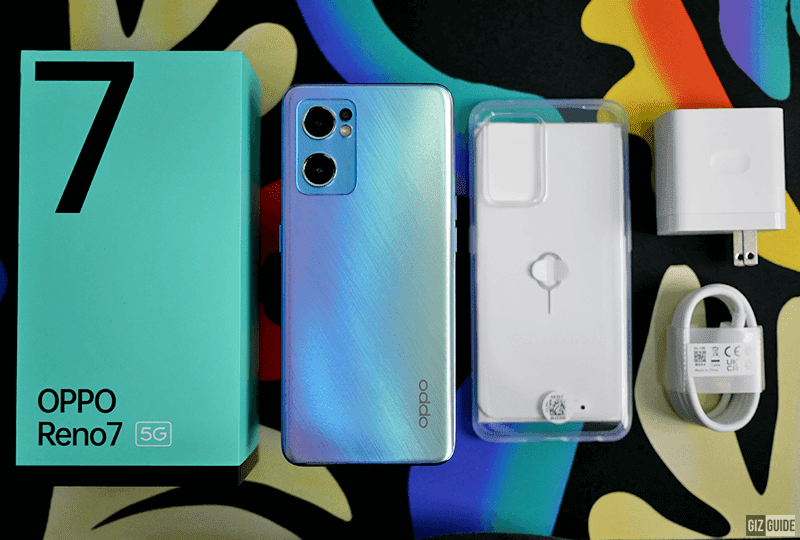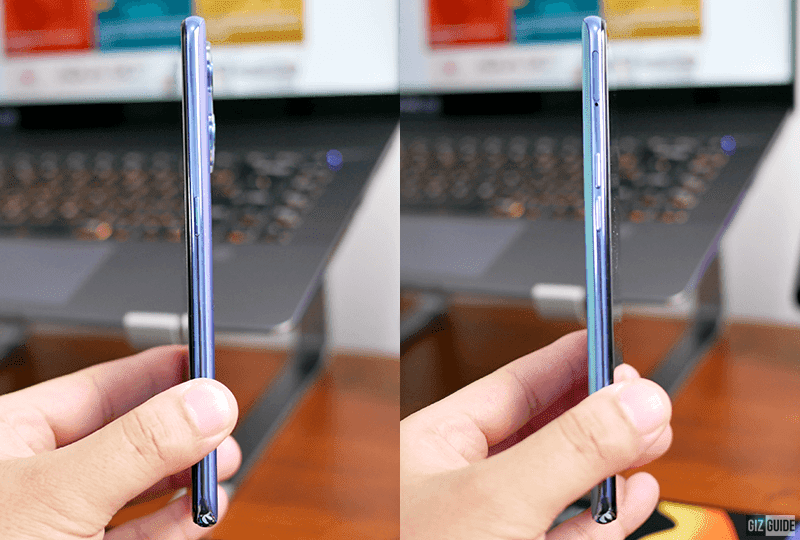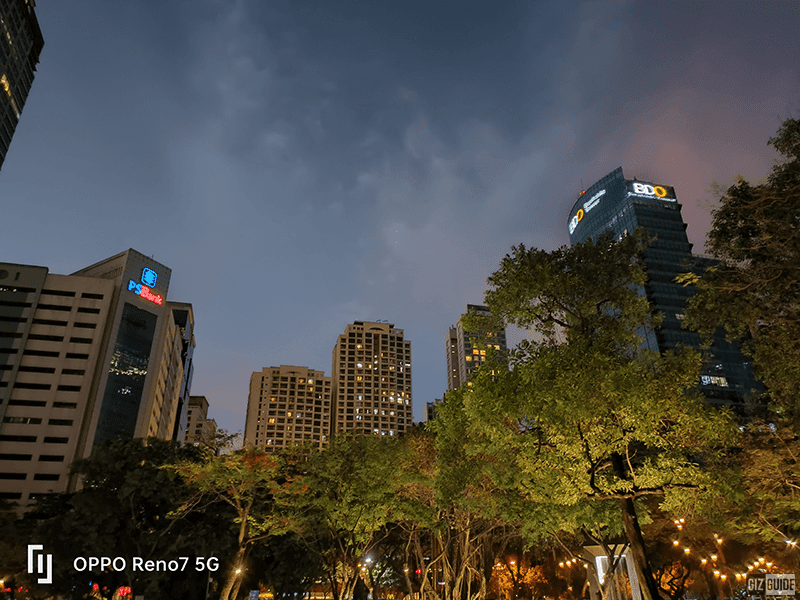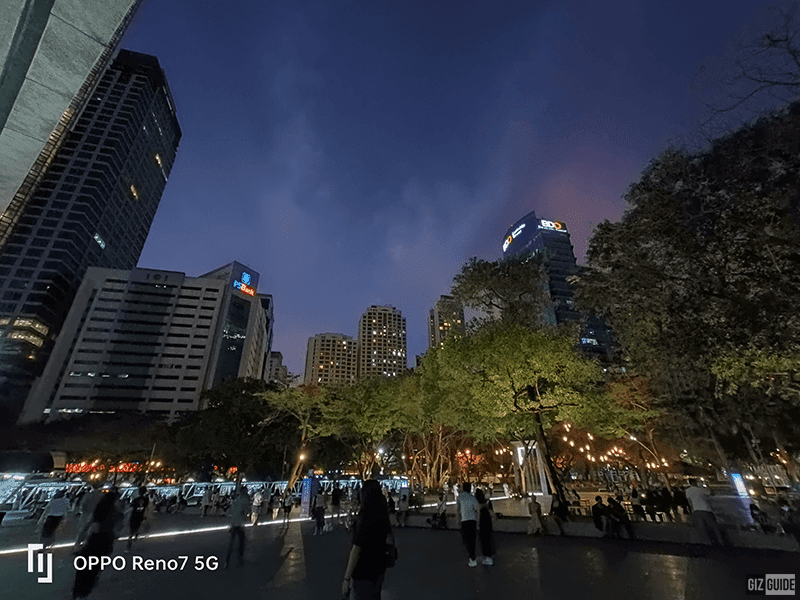On paper, the Reno7 5G inherited a similar display, processor, RAM, super-fast charging, and even camera specs. The launch price is even the same.
What's new here is it dons a new look, double the storage at 256GB, a slightly larger 4,500mAh battery (coming from 4,300mAh), and the newer ColorOS 12 out of the box.
But are these upgrades enough versus the competition?
Here's part 1 of our review—unboxing, first impressions, and camera samples.
Unboxing/Accessories
 |
| Unboxed! |
The OPPO Reno7 5G arrived with a similar box from the
Reno6 Z 5G last year. Inside, you will see another carton container where you will find the TPU clear case, paper documents, paper documents, and the SIM ejector tool.
After that, you will see the handset itself with a super-sleek-looking back cover. By the way, the phone has a pre-installed screen protector as well. So, there's no need to buy one immediately.
Next, is the USB-C 65W power brick and a USB-A to USB-C data or charging table.
The best part here is it has the USB-C 65W SUPERVOOC power brick. Not every phone maker is generous enough to include a super-fast charging brick in their package.
What's missing is earphones with a mic.
Build Quality/Design
 |
| Nice back design! |
In terms of materials used, the Reno7 5G has a 3D curved polycarbonate shell at the back, a plastic frame, and a Gorilla Glass 5 protected front for added screen durability.
Decent build, but we wish it has a real glass back and IP rating...
The rubber gasket is also present in the SIM card tray which should provide this device some sort of resistance against water splashes. Note that there's no IP rating, so still avoid it from getting wet.
 |
| The back design |
Coming from the Reno6 5G, the Reno7 5G has a totally different back cover design. Gone is the boxy look and the 3D curved back panel is back. This is arguably the more convenient thing to do as curvy phones are traditionally more comfortable to hold than boxy/edgy handsets.
Curvy, shiny, yet not fingerprint smudge magnet...
Personally, I like the feel in the hands of the Reno7 5G better. But in terms of being more premium, the real metal and glass material combined with the boxy design of the Reno6 5G is better. We wished OPPO used real glass at the back here.
Anyway, the device has an interesting finish at the back as well.
The company is also introducing a new-gen OPPO Glow finish on this one. The first color is the Startails Blue which used Laser Direct Imaging (LDI) to create a star trails-like effect with a matte-like finish to prevent fingerprint smudges while keeping the device shiny with neat reflections.
The second color is Starry Black which looks like a "star-studded" cosmos with blue and black gradients.
 |
| Rigid AMOLED |
In front, the device is equipped with a fairly large 6.4-inch panel with a Rigid LTPS AMOLED screen with a 90Hz refresh rate, 180Hz touch sampling rate, FHD+ resolution, and top-left punch-hole housing the selfie camera.
As expected, bezels are slim on top and on the sides. The punch-hole cutout is also not that big to be intrusive. However, its chin bezel is not that pleasant to the eyes, especially at this price point. It is thick.
Its screen is fairly immersive, but it would have been more immersive and stunning if the chin bezel is a bit slimmer.
 |
| Top, bottom |
On top, the handset has a single microphone. Below, you will find the 3.5mm headphone jack slot which is nice, another microphone, USB-C reversible port, and a speaker grille. In case you are wondering, it is not stereo.
 |
| Left, right |
On the left, it has the volume rocker (up and down keys), a pinhole to access the dual SIM slots. The dual SIM card tray has a dedicated slot for microSD aside from the dual nano-SIM slots. On the right, you will find the power key.
 |
| Triple-cam! |
For cameras, the device is packed with 3 sensors behind. It is headlined by the 64MP f/1.7 main shooter with PDAF focus and EIS for the Ultra Steady function. This sensor is paired with an 8MP f/2.5 120-degree ultra-wide-angle camera and a 2MP f/2.4 4cm macro helper. The device also has a single LED flash when needed.
This also highlights an improved Portrait mode with Bokeh Flare Portrait and the AI Highlight Video.
Anyway, here are the first shots we took using the Reno7 5G.
First Camera Samples
 |
| Daylight |
 |
| Daylight ultra-wide |
 |
| Outdoor Bokeh Flare Portrait |
 |
| Indoor close-up |
 |
| Indoor food shot |
 |
| Night mode |
 |
| Night mode ultra-wide |
 |
| Indoor selfie auto |
 |
| Indoor selfie Bokeh Flare Portrait |
So far, the pictures that the OPPO Reno7 5G produced are mostly great, but we've seen better for the price.
Anyway, daylight shots are crisp with correct exposure and colors and the ultra-wide cam is not bad and it isn't that distorted.
We can also see that OPPO really put an effort to try and make the colors from the main camera to the ultra-wide camera identical.
The macro cam is only usable in well-lit conditions, preferably daylight. Going back to the main and wide cameras, you won't have issues using them for indoor scenes as long as the lighting is decent. But, you will see here that the main cam is superior in gathering light, details, and dynamic range.
The Bokeh Flare Portrait is cool as it mimics DSLR-like camera background blur. The edge detection on the hair needs a bit of improvement though.
For low light, they are acceptable by default. But, use the Night mode for non-moving subjects. From memory, the ultra-wide cam is a bit more detailed than the ultra-wide of previous Reno devices for low light shots.
The selfie cam is great. The Bokeh Flare Portrait mode made our skin whiter.
We have yet to fully explore its 4K video capability, but we noticed a crop when using the Ultra Steady feature at 1080p at 60fps.
Our full camera analysis will be available in our full review.
Display: 6.4-inch 2.5D curved Gorilla Glass 5 protected Rigid LTPS AMOLED screen w/ 90Hz refresh rate, 180Hz touch sampling rate, FHD+ 2400 x 1080 resolution at 411 ppi
Back Camera: 64MP f/1.7 w/ PDAF + 8MP f/2.5 120-degree ultra-wide-angle + 2MP f/2.4 4cm macro + LED flash
Connectivity: WiFi 6, 5G, 4G LTE, Bluetooth 5.2 (SBC, AAC, aptX, LDAC, LHDC), OTG, NFC, GPS, A-GPS, GLONASS, BeiDou, QZSS, Galileo, dual SIM
Sensors: Accelerometer, light, orientation, proximity, gyroscope, sound, magnetic
Others: In-Display fingerprint sensor, liquid cooling system, USB-C, Colors: Starlight Black, Startrails Blue
However, this is currently facing very stiff competition at this price point and lower as most phones from other brands have stronger overall specs. It is common to see speedier chips like the Dimenstiy 1200 and Snapdragon 778G.
Anyway, that's our initial observation. We will reserve our judgment in our full review.

.gif)



































Post a Comment